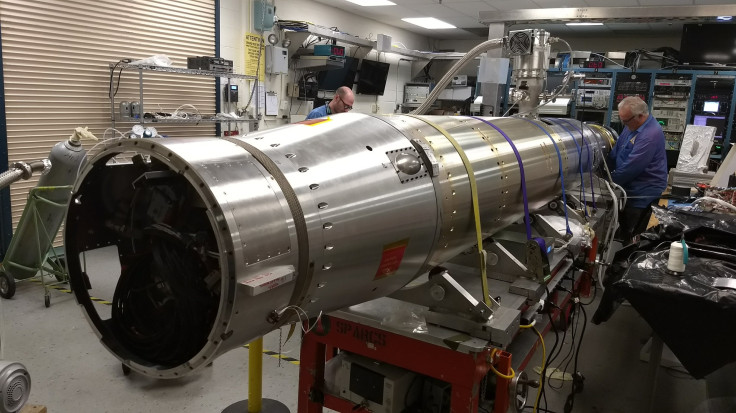NASA Sounding Rocket Flight Oct. 30 To Study Intergalactic Medium

Despite the view from Earth, the large distances between galaxies in space are not actually empty. The intergalactic medium (IGM) fills up those massive voids, but the sparse nature of this rarified plasma means it emits very little light and is therefore difficult to study.
To try get around that, NASA will launch a sounding rocket Oct. 30 with an instrument capable of seeing ultraviolet light — Dual-channel Extreme Ultraviolet Continuum Experiment, or DEUCE — that will “measure starlight from a pair of nearby hot stars in the constellation Canis Major, aiming to help researchers understand how the IGM got to its current state,” the space agency said in a statement Saturday.
IGM is mostly hydrogen (though it has heavier elements too) where the electrons have broken away from their atoms, making the gas charged or ionized. A common theory to explain how the IGM became ionized says it happened due to the radiation from intense ultraviolet originating in star-forming galaxies, but there is disagreement whether this was the only phenomenon that got IGM to its current state.
“DEUCE is about being able to better understand if and how star-forming galaxies ionized the early universe. This ionizing light has never been measured accurately in hot stars, and DEUCE will make the first calibrated measurement of it, telling us the contribution stars could have had to help ionize the universe,” Nicholas Erickson, a graduate student at the University of Colorado Boulder working with the project, said in the statement.
To do this, DEUCE will look at two young, bright stars, one each during two flights. These stars are Beta Canis Major and Epsilon Canis Major, about 500 light-years and 450 light-years away, respectively. They were chosen because “their light reaches Earth before being fully absorbed by the interstellar gas, allowing the scientists to measure the amount of starlight to see if it’s enough to significantly contribute to the amount of ionized gas in the IGM.”
The special ultraviolet optical instrument on DEUCE is a microchannel plate detector — the largest ever flown in space — which it will use to measure starlight. Studying the ultraviolet component of sunlight is impossible to do from Earth’s surface since ozone in the atmosphere blocks most of it.
DEUCE will make a 15-minute suborbital flight aboard a Black Brant IX sounding rocket from the White Sands Missile Range Las Cruces, New Mexico. It is scheduled to fly again in December 2018, when it will look at Epsilon Canis Major.
© Copyright IBTimes 2024. All rights reserved.





















